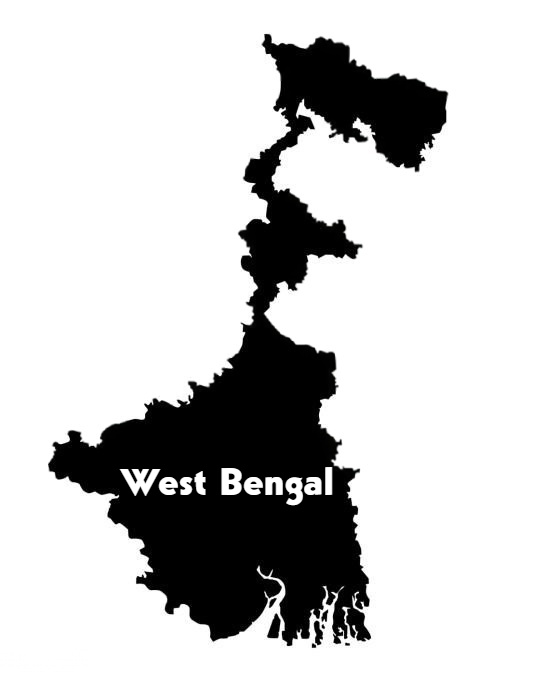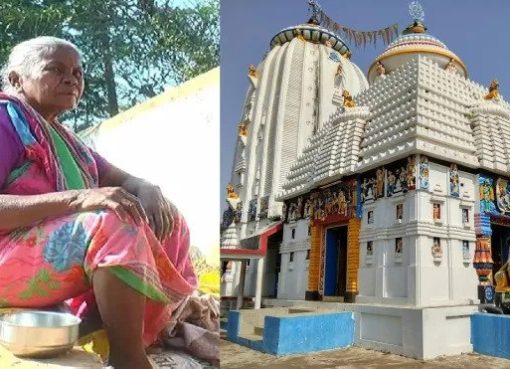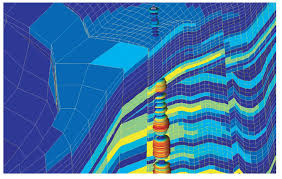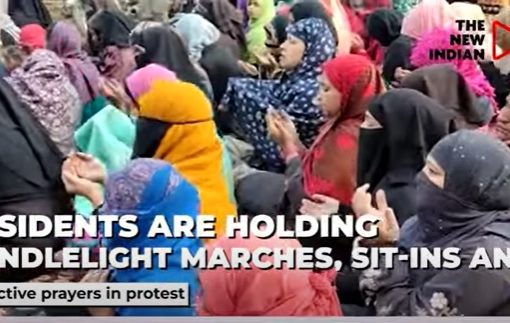– Sri Animitra Chakraborty
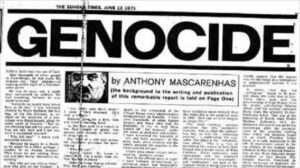 The name of Anthony Mascarenhas does remain alien to the Indian press till date even though this journalist, a Goan Catholic and also hailing from Karachi, had performed an astounding job that may turn to anyone’s nightmare if his works are read carefully. Being a Pakistani journalist and known for hobnobbing with the highest echelon of highest Pakistani political stratum in the tumultuous 1971, Anthony Mascarenhas reached East Pakistan (now, Bangladesh) as part of a guided tour but what he perceived there throttled his senses almost but true to his ethics, he decided to publish his own experiences. As Pakistan was no safe haven for this adventurist mode, Anthony fled to London with his family and being indorsed by the British Press, Mr. Harold Evans, Editor at Sunday Times in particular. On June 13, 1971 the harrowing article got published with the headline ‘GENOCIDE’, along with divulging Pakistani brutality, portrayed the entire theater was nothing but a gruesome slaughter of Hindus en masse or a racial extermination of Hindus.
The name of Anthony Mascarenhas does remain alien to the Indian press till date even though this journalist, a Goan Catholic and also hailing from Karachi, had performed an astounding job that may turn to anyone’s nightmare if his works are read carefully. Being a Pakistani journalist and known for hobnobbing with the highest echelon of highest Pakistani political stratum in the tumultuous 1971, Anthony Mascarenhas reached East Pakistan (now, Bangladesh) as part of a guided tour but what he perceived there throttled his senses almost but true to his ethics, he decided to publish his own experiences. As Pakistan was no safe haven for this adventurist mode, Anthony fled to London with his family and being indorsed by the British Press, Mr. Harold Evans, Editor at Sunday Times in particular. On June 13, 1971 the harrowing article got published with the headline ‘GENOCIDE’, along with divulging Pakistani brutality, portrayed the entire theater was nothing but a gruesome slaughter of Hindus en masse or a racial extermination of Hindus.
To quote Anthony, as published, “I saw Hindus, hunted from village to village and door to door, shot off-hand after a cursory ‘short-arm inspection’ showed they were uncircumcised. I have heard the screams of men bludgeoned to death in the compound of the Circuit House (civil administrative headquarters) in Comilla. I have seen truckloads of other human targets and those who had the humanity to try to help them hauled off ‘for disposal’ under the cover of darkness and curfew.” And this would have been the fate of entire Hindu Bengali Nation had there been no formation of the Indian state of West Bengal. Another serious fact must also be discerned – relevant documents do portray a spine-chilling gospel, at least 110 genocides of Hindu Bengalis have taken place in the last 8 decades almost making it the most endangered community in the post-World War II scenario. What has happened to the rest? The majority of those hapless Hindus, if not more, have got refuge in West Bengal on June 20, 1947 or almost two months before to the national independence. A few cluster of researchers do also depict, counting on contemporary records, the national independence would have remained the furthest dream had not the crucial bone of contention of partition of Bengal been solved earlier.
It can, therefore, be deduced without a shred of doubt, formation of West Bengal was a visionary endeavor under the aegis of a smattering of proponents. But this was no simple war of words; an extremely arduous struggle from the very beginning since Kolkata (then Calcutta) was both the financial capital of India and also the second city in British Empire after London and Muslim League was prepared enough to pay the heaviest price for it or to include the finest British Indian metropolis to Pakistan. Calcutta was no mere target alone; the entire Bengal province would be wrapped under the green banner, such was the aim. And the contrivance was forged by the early 30s – the decade that witnessed the most execrable communal conflagration across Bengal.
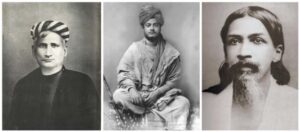 It’s worthy of an intellectual mind to ask whether the conflagration was any sudden development. The curious mind might be answered – there was no such and if history is studied meticulously, communal tensions were quite common across the province and all these did initiate in the Swadeshi era or heydays of anti-partition movement of 1905. Ingenious British project to curb burgeoning patriotic fervor among Bengali Hindus in particular as found in the words and speeches of Bankimchandra Chatterjee-Swami Vivekananda-Aurobindo Ghosh and the simultaneous growth of revolutionary societies viz. Anushilan Samiti, Jugantar, Atmnonnati Samaiti, Mukti Sangha-Bengal Volunteers to wrest national freedom came forth through the annunciation of Partition of Bengal-1905 and raging approaches in protest unified Hindus – an unfathomable phenomenon never witnessed before. A series of protestations including boycott, picketing, mass meetings, intensification of Masculine Hinduism unnerved the British hegemony while Muslims, disquieted and furious and hoping to draw benefits from the royal benediction through partition, continued to watch the entire event from a distance and with weird silence. The ascending hatred to Hindus culminated in their murderous celebrations successively in both Comilla and Mymensingh (Jamalpur) in 1941. For four days beginning from March 4, streets and alleys in Comilla were cluttered with blood and corpses of Hindus. incidents of ravaging modesty of Hindu women were innumerable while the colonial administration proved to be deaf or found extolling Islamists in public.
It’s worthy of an intellectual mind to ask whether the conflagration was any sudden development. The curious mind might be answered – there was no such and if history is studied meticulously, communal tensions were quite common across the province and all these did initiate in the Swadeshi era or heydays of anti-partition movement of 1905. Ingenious British project to curb burgeoning patriotic fervor among Bengali Hindus in particular as found in the words and speeches of Bankimchandra Chatterjee-Swami Vivekananda-Aurobindo Ghosh and the simultaneous growth of revolutionary societies viz. Anushilan Samiti, Jugantar, Atmnonnati Samaiti, Mukti Sangha-Bengal Volunteers to wrest national freedom came forth through the annunciation of Partition of Bengal-1905 and raging approaches in protest unified Hindus – an unfathomable phenomenon never witnessed before. A series of protestations including boycott, picketing, mass meetings, intensification of Masculine Hinduism unnerved the British hegemony while Muslims, disquieted and furious and hoping to draw benefits from the royal benediction through partition, continued to watch the entire event from a distance and with weird silence. The ascending hatred to Hindus culminated in their murderous celebrations successively in both Comilla and Mymensingh (Jamalpur) in 1941. For four days beginning from March 4, streets and alleys in Comilla were cluttered with blood and corpses of Hindus. incidents of ravaging modesty of Hindu women were innumerable while the colonial administration proved to be deaf or found extolling Islamists in public.
To quote Dr. R.C. Majumdar – The Partition of Bengal – History of the Indian Freedom Movement – Vol. 2; Page 104, “When the Nawab (Salimullah of Dhaka) was being taken in a procession through the public streets, there occurred a case of assault on Hindus, and looting of a few Hindu, particularly Hindu Swadeshi, shops. These incidents were a signal for a general outbreak of hooliganism involving assault, looting, destruction of properties and arson… On the other hand, the Government officials were full of praise for the Muhammadans…The Comilla riot was followed by various other outbreaks of a similar nature….Consider able bodies of Muhammadans, armed with lathis mustered from time to time and molested the Hindus. As a result there was wide-spread panic among the Hindu minority population in East Bengal…
The same account was echoed almost in “The New Spirit in India” by H.W. Nevinson, British war correspondent visiting India then. As per him, “I have almost invariably found English officers…on the side of the Mohammedan, where there is any rivalry of…religion… in Eastern Bengal this national inclination is now encouraged by the Government’s open resolve to retain the Mohammedan support of the Partition by any means…It was against the Hindus only that all the petty persecution of officialdom was directed. It was they who were excluded from Government posts ;it was Hindu schools from which Government patronage was withdrawn. When Mohammedans rioted, the punitive police ransacked Hindu houses… mullahs went through the country preaching the revival of Islam and proclaiming to the villagers that the British Government was on the Mohammedan side, that the Law Courts had been specially suspended for three months, and no penalty would be exacted for violence done to Hindus, or for the loot of Hindu shops, or the abduction of Hindu widows A Red Pamphlet was everywhere circulated, maintaining the same wild doctrines… In Comilla, Jamalpur and a few other places, rather serious riots occurred…lives were lost, temples were desecrated, images broken, shops plundered, and many Hindu widows carried off. Some of the towns were deserted, the Hindu population took refuge in “pukka” houses (i e., house with brick in stone walls), women spent nights hidden in tanks, the crime known as “group-rape” increased, and throughout the country districts there reigned a general terror, which still prevailed at the time of my visit.” In any ensuing riot across Bengal this was the conventional format.
But there was indeed a difference now. Hindu revolutionary societies rose up to the occasion and volunteers of Dhaka Anushilan Samiti, Atmonnati Samiti (from Calcutta) were witnessed to take part in violent resistance with arms and ammunitions on both occasions. In the devastating Dhaka riots of 1928, Bengal Volunteers plunged into the chronicle of violent resistance against Islamists.
Meanwhile on December 12, 1911 King George V announced at the Delhi Durbar of withdrawal of Bengal Partition Project and assimilation of Eastern Bengal into the Bengal Presidency irking both British hegemony and Islamists in unison to inflict the worst calamity on Hindus of Bengal. It might also be noted, in the same year of 1911 British government adopted a surreptitious stratagem to alter the map of Bengal Presidency to weaken Hindus in particular. On March 2, 1912 Bihar and Orissa divisions were separated from Bengal Presidency on alleged reasons of administrative amelioration and the declension of Hindu populace became irresistible. However, the crafty imperialist design failed to escape nationalist attentions and Hindu-owned press and publications termed this as extremely grave.
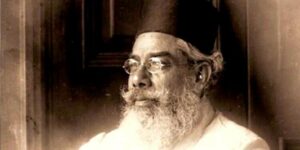 Apprehensions on Bengal were heard in the Presidential Address of Dr. B.S. Moonje during the Hindu Mahasabha session at Patna – April, 1927. He stated, “I shudder to think what shall happen to Bengal, say 50 years hence, if this course of rapid decline of the Hindus in Bengal is not checked. I am afraid Bengal is fairly on the way to become another Kashmere of India in this respect. I feel from what I have seen and read of the daily happenings in East Bengal particularly that Bengalees alone and unaided by Hindus outside Bengal are absolutely incapable of resisting the inroads of Islam into the preserves of Hinduism there. Let Bengal clearly understand that it may exercise some pressure on the Govt. through the cult of the Bomb and the Pistol, but it will not be able to maintain and the pressure until it develops the Lathi cult and proves its capacity of putting down the mischievously aggressive mass Hooliganism…”
Apprehensions on Bengal were heard in the Presidential Address of Dr. B.S. Moonje during the Hindu Mahasabha session at Patna – April, 1927. He stated, “I shudder to think what shall happen to Bengal, say 50 years hence, if this course of rapid decline of the Hindus in Bengal is not checked. I am afraid Bengal is fairly on the way to become another Kashmere of India in this respect. I feel from what I have seen and read of the daily happenings in East Bengal particularly that Bengalees alone and unaided by Hindus outside Bengal are absolutely incapable of resisting the inroads of Islam into the preserves of Hinduism there. Let Bengal clearly understand that it may exercise some pressure on the Govt. through the cult of the Bomb and the Pistol, but it will not be able to maintain and the pressure until it develops the Lathi cult and proves its capacity of putting down the mischievously aggressive mass Hooliganism…”
The mischievous 1930s sealed the fate of Hindus in Bengal almost. While the Communal Award as announced by the British Prime Minister Ramsay MacDonald strengthened its despicable footprint through granting separate electorates to assorted religious and social groups including Muslims and Hindu Depressed Classes or Dalits, the Government of India Act 1935 castrated Bengal’s landscape forever turning Hindus to an eternally second-class citizen in the province. It was, therefore, the time of joyous celebrations of Muslims leaving Hindus in utter darkness in the provincial autonomy granted by the royal blessings. On the words of Nirad C. Chaudhuri, globally acclaimed Bengali intellect and also awarded by the Oxford University an Honorary Degree in Letters, Hindus in Bengal thus got the right to witness, contemplate but were bereft of any power to act.
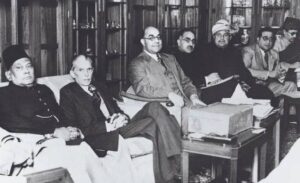 The year 1937 proves to be a watershed in Bengal’s political landscape; the inscrutable reluctance of Congress to be a part of the ruling governance despite being the single largest party with 54 seats paved the way for Muslim politics under the government of Praja Krishak Party and Muslim League driven to commove and destruct the Hindu social milieu by introducing successive communally explosive bills in the state legislature. Whether the Bengal Tenancy (Amendment) act 1938 or Bengal Secondary Education Bill, 1940, Hindus and Muslims found themselves in watertight compartments and thus the seed of impending partition was led finally. And to add salt to the gaping wound, riots in the rural areas of Dhaka in 1941 took place vociferously. In accordance with the Report of the Dhaka Riots Enquiry Committee – Government of Bengal (1942), 81 villages were cleared of all Hindus within five days, 2519 Hindu households (joints families) including 15, 724 persons literally went through servitude thanks to unceasing incidents loots and arson. If there was anything left was the final showdown at the Direct Action Day on August 16, 1946 followed by the Genocide of Noakhali (October 10, 1946) avenged by the unthinkable brutality at Bhagalpur, Garmukteswar and the rest of Bihar.
The year 1937 proves to be a watershed in Bengal’s political landscape; the inscrutable reluctance of Congress to be a part of the ruling governance despite being the single largest party with 54 seats paved the way for Muslim politics under the government of Praja Krishak Party and Muslim League driven to commove and destruct the Hindu social milieu by introducing successive communally explosive bills in the state legislature. Whether the Bengal Tenancy (Amendment) act 1938 or Bengal Secondary Education Bill, 1940, Hindus and Muslims found themselves in watertight compartments and thus the seed of impending partition was led finally. And to add salt to the gaping wound, riots in the rural areas of Dhaka in 1941 took place vociferously. In accordance with the Report of the Dhaka Riots Enquiry Committee – Government of Bengal (1942), 81 villages were cleared of all Hindus within five days, 2519 Hindu households (joints families) including 15, 724 persons literally went through servitude thanks to unceasing incidents loots and arson. If there was anything left was the final showdown at the Direct Action Day on August 16, 1946 followed by the Genocide of Noakhali (October 10, 1946) avenged by the unthinkable brutality at Bhagalpur, Garmukteswar and the rest of Bihar.
Finally, the clarion call of forming a Hindu-dominated state or divide the state on communal line appeared in the public scenario. The vicious Direct Action, contrary to Muslim expectations, proved to be a glorious victory of Hindus due to their unexpected martial prowess. Needless to say, victory at Calcutta civil war intensified the Hindu voice of partition. Hindu Mahasabha, led by Dr. Shyamaprasad Mukherjee, fought tooth and nail to attain its sole objective of attaining a Hindu homeland.
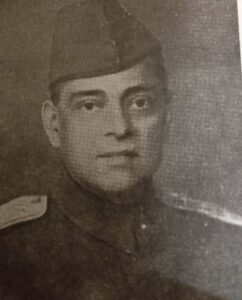 By the end of 1946, the Bengal Partition League was created and supervised by a plethora of eminent Bengali Hindu intellectuals as one of the premier organizations advocating the formation of a new Hindu homeland within the Union of India named West Bengal. They included Hemanta Kumar Sarkar, Nalinakshya Sanyal, Major General A. C. Chatterjee, Jadab Panja, Dr Syama Prasad Mookerjee, Upendranath Banerjee, Dr Shishir Kumar Banerjee, Subhodh Chandra Mitra and Shailendra Kumar Ghosh. The Bengal Partition League later came to be known as the Bengal Provincial Conference. On 29 March, at the annual meeting of the British Indian Association, a proposal was passed for the constitution of a homeland for the Bengali Hindus.
By the end of 1946, the Bengal Partition League was created and supervised by a plethora of eminent Bengali Hindu intellectuals as one of the premier organizations advocating the formation of a new Hindu homeland within the Union of India named West Bengal. They included Hemanta Kumar Sarkar, Nalinakshya Sanyal, Major General A. C. Chatterjee, Jadab Panja, Dr Syama Prasad Mookerjee, Upendranath Banerjee, Dr Shishir Kumar Banerjee, Subhodh Chandra Mitra and Shailendra Kumar Ghosh. The Bengal Partition League later came to be known as the Bengal Provincial Conference. On 29 March, at the annual meeting of the British Indian Association, a proposal was passed for the constitution of a homeland for the Bengali Hindus.
On April 15, 1947 a mammoth conference of Hindu Mahasabha was organized at Tarakeswar witnessing the historic resolution authorizing Dr. Mukherjee to create a council of action tasked with forming a separate homeland for Hindus of Bengal. The bandwagon was also joined by Congress, nationalist intelligentsia, revered leaders of grassroots struggles like Sri PR Thakur of Matua community. The historic gallup poll of Amrita Bazar Patrika, renowned English daily, surfaced in the same April, 1947 evincing the majority of Hindus opted for partition. Altogether, 76 public meetings were organized to motivate Hindus for partition; 59 were done by Congress while Hindu Mahasabha did convene 12 meetings. Only 5 were convened by the two jointly while the largest one was presided over by Sir Jadunath Sarkar, globally acclaimed historian, in Kolkata.
The fiery temperament coupled with desperation to form a separate homeland for Hindus of Bengal or West Bengal was such that any alternative sustainable plan like United Bengal (as theorized by Sri Sarat Chandra Basu and iniquitous Suhrawardy) was rejected in utter disgust. Witnessing the dogged Hindu standpoint on partition Communist Party of India, transfixed for its doctrine of Muslim self determination even a year ago, yielded finally and two of its members in Bengal Legislature Sri Jyoti Basu and Sri Ratanlal Brahman, opted for Hindu-dominated West Bengal.
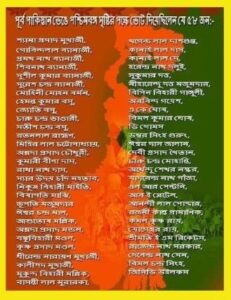 Other Honorable Bengal Legislature Members voting for the Hindu homeland of West Bengal included Sri Gobindalal Banerjee, Sri Pranatha Nath Banerjee, Sri Shibnath Banerjee, Sri Sushil Kumar Banerjee, Sri Suresh Chandra Banerjee, Sri Mohini Mohan Barman, Sri Hemanta Kumar Basu, Sri Charu Chandra Bhandari, Sri Satish Chandra Basu, Sri Mihir Lal Chatterjee, Sri Annada Prasad Chaudhuri, Sm. Bina Das, Sri Radha Nath Das, Sir Uday Chand Mahatab, Sri Nikunja Bihari Maiti, Sri Bishapati Majhi, Sri Bhupati Majumdar, Sri Ishwar Chandra Lal, Sri Asutosh Mallik, Sri Annada Prasad Mandal, Sri Banku Bihari Mandal, Sri Krishna Prasad Mandal, Sri Shyama Prasad Mukherjee, Sri Dhirendra Narayan Mukherjee, Sri Kalipada Mukherkjee, Sri Mukunda Bihari Mallik, Sri Basanti Lal Murarka, Sri Khagendra Lal Dasgupta, Sri Kanai Lal Das, Sri Harendra Nath Dalui, Sri Sukumar Dutta, Sri Nihrendu Dutta Majumdar, Sri Bipin Behari Ganguli, Sri Arabind Gayesh, Sri AK Ghosh, Sri Bimal Kumar Ghosh, D Gomes, Sri Dambar Singh Gurung, Sri Ishwar Das Jalan, Sri Debi Prasad Khaitan, Sri Charu Chandra Mohanty, Sri Ardhendu Shekhar Naskar, Sri Jadabendra Nath Panja, AR Anthony, RE Pletel, Sri Anandai Lal Poddar, Sri Rajani Kant Pramanik, Sri Kamal Krishna Ray, Sri Jogeswar Ray, Sm. EN Rickets, Sri Rajendra Nath Sarkar, Sri Debendra Nath Sen, Sri Bimal Chandra Singha, GCD Wilks and finally with a massive 58 votes against 21, the official proposal to create West Bengal was passed.
Other Honorable Bengal Legislature Members voting for the Hindu homeland of West Bengal included Sri Gobindalal Banerjee, Sri Pranatha Nath Banerjee, Sri Shibnath Banerjee, Sri Sushil Kumar Banerjee, Sri Suresh Chandra Banerjee, Sri Mohini Mohan Barman, Sri Hemanta Kumar Basu, Sri Charu Chandra Bhandari, Sri Satish Chandra Basu, Sri Mihir Lal Chatterjee, Sri Annada Prasad Chaudhuri, Sm. Bina Das, Sri Radha Nath Das, Sir Uday Chand Mahatab, Sri Nikunja Bihari Maiti, Sri Bishapati Majhi, Sri Bhupati Majumdar, Sri Ishwar Chandra Lal, Sri Asutosh Mallik, Sri Annada Prasad Mandal, Sri Banku Bihari Mandal, Sri Krishna Prasad Mandal, Sri Shyama Prasad Mukherjee, Sri Dhirendra Narayan Mukherjee, Sri Kalipada Mukherkjee, Sri Mukunda Bihari Mallik, Sri Basanti Lal Murarka, Sri Khagendra Lal Dasgupta, Sri Kanai Lal Das, Sri Harendra Nath Dalui, Sri Sukumar Dutta, Sri Nihrendu Dutta Majumdar, Sri Bipin Behari Ganguli, Sri Arabind Gayesh, Sri AK Ghosh, Sri Bimal Kumar Ghosh, D Gomes, Sri Dambar Singh Gurung, Sri Ishwar Das Jalan, Sri Debi Prasad Khaitan, Sri Charu Chandra Mohanty, Sri Ardhendu Shekhar Naskar, Sri Jadabendra Nath Panja, AR Anthony, RE Pletel, Sri Anandai Lal Poddar, Sri Rajani Kant Pramanik, Sri Kamal Krishna Ray, Sri Jogeswar Ray, Sm. EN Rickets, Sri Rajendra Nath Sarkar, Sri Debendra Nath Sen, Sri Bimal Chandra Singha, GCD Wilks and finally with a massive 58 votes against 21, the official proposal to create West Bengal was passed.
The coveted Indian state of West Bengal finally came into existence on June 20, 1947.
Would the posterity be strong enough to honor this grueling struggle and retain identity?
(The article has already been published in the website of Sriti O Chetona)
(https://sritiochetona.org/hindu-homeland-west-bengal/)
Author: Sri Animitra Chakraborty (General Secretary – Bengal Volunteers, Editor – Kanjik)
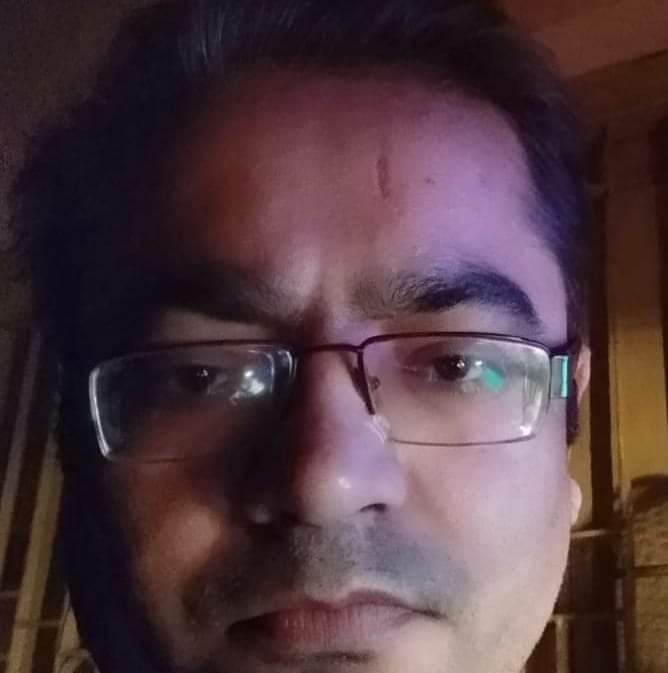
শ্রী অনিমিত্র চক্রবর্তী হলেন একজন সাংবাদিক ও বিভাগীয় লেখক (columnist) এবং বেঙ্গল ভলান্টিয়ার্সের এক সক্রিয় কর্মী।


